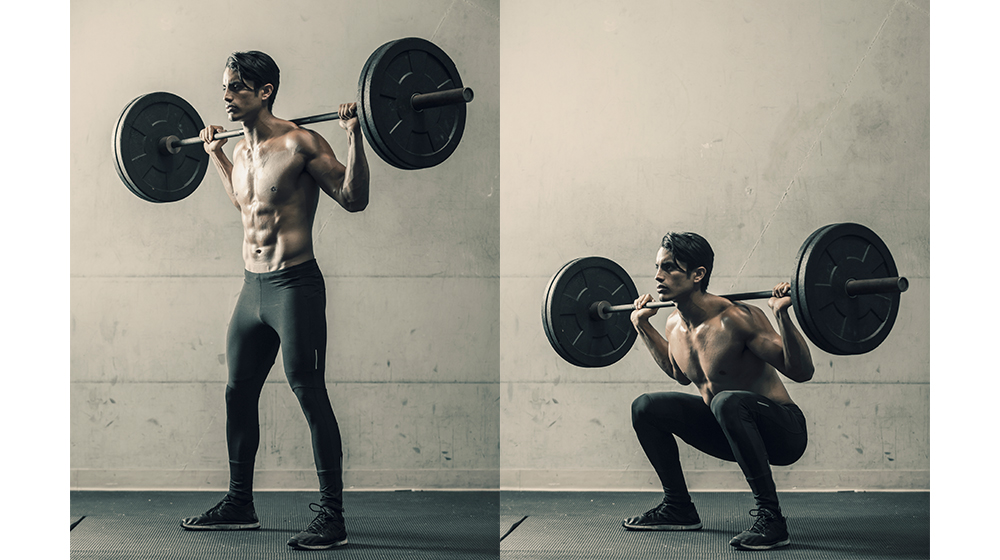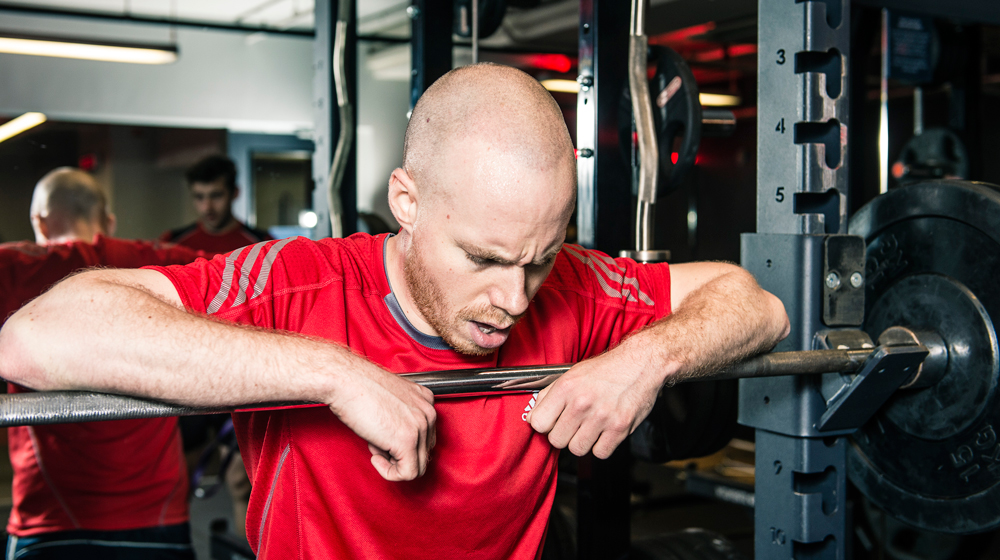
This month marks 40 years since one of the most controversial Olympic Games of all time, yet the legacy of Montreal 1976 still burns bright. These were the Olympics in which 25 African nations boycotted the event – in protest at New Zealand’s rugby tour of South Africa during the apartheid era. Where Bruce Jenner (now Caitlyn) shattered world records to claim decathlon gold. And where Romanian gymnast Nadia Comaneci scored the first ever perfect 10 – and then six more – in her pursuit of a gold medal trio, aged just 14.
But none of these sporting Hallmark moments have a foot in the present (excluding Jenner, perhaps, who is seldom absent from the MailOnline’s sidebar). Instead it’s the Soviet Union weightlifting team – that snaffled seven of the nine available golds – and, more specifically, their deeply coveted scripture: the 1976 USSR Weightlifting Yearbook.
Four decades on, this elusive text is long out of print, though its teachings pass from gym to gym like a photocopied Masonic handshake. The content is simple – a six-week plan of barbell squats three times a week, with a view to upping your one rep max (1RM, or the maximum you can lift if you only have to do it once) – yet, to its weights room disciples, the Russian Squat Routine is a gym-floor Holy Bible.
But in a modern fitness era that embraces CrossFit, HIIT and dynamic bodyweight workouts, can a middle-aged, monotonous, suitably Soviet prescription of heavy metal still hold weight? Or has gym bro and hipster culture collided to falsely trumpet a long-outdated trend? If you blew the dust from your hip flexors, you just might find out.
Barbell squats are the single most effective exercise to pack muscle to your frame.
In a New York Times essay bearing the headline “What’s The Best Exercise?”, Professor Stuart Phillips nominated the squat, branding it “very potent” in combating the effects of sarcopenia – otherwise known as the breakdown of muscle mass that comes with ageing. So this is something every man needs to be considering.
Gains aren’t restricted to keeping the Reaper at bay, either. Often dismissed as a mere leg day staple, loading bumper plates onto a bar, getting low and driving upwards engages a laundry list of upper body parts – your shoulders, back and abs among them. It’s also the sole movement to engage your entire posterior chain (comprising of the glutes, hamstrings, abductors and lower back) and quads simultaneously.
For the gym-shy, time-starved and/or those who want their session simmered down to a single move, consider squatting as your gym-based cheat code.
Sign up for workout ideas, training advice, reviews of the latest gear and more.
“Squatting is the kale of workouts – it’s a superfood,” claims Ben Rowe, a vending machine-sized bodybuilder and lead coach at Team Benbo. “As it’s a compound movement, squats will assist in building muscle in your entire body. It’s proven that your body triggers an increase in growth hormone and testosterone, whereas day-to-day activities like climbing stairs or bringing in the food shop become a breeze – as squatting improves balance, mobility, strength and joint stability.”
The Russian Squat Routine is the gold standard for taking lifters to the next level.

It’s no nonsense and zero frills – but with a four-decade-strong record for results (including those shiny Montreal medals). With three sessions evenly spaced throughout each week, the first nine progressively up the volume while maintaining 80% of your one rep max. The following nine sessions see volume reduced, ahead of a climactic final day in week six, where your new 1RM is calculated. The programme promises a 5% 1RM increase, colossal for strong squatters whose progress might have plateaued; the difference between gold-and-champers or bronze-and-a-crying-fit at elite level.
Numerous rivals have since emerged, including the Smolov Programme (a torturous routine that spans 13 weeks of super-heavy squats); Westside Barbell Conjugate Method (two squat days a week – the first maximum effort, the second dynamic squatting and deadlifting) and 5/3/1 (one session of front and back squats a week, for four weeks, of varying effort).
But there’s a reason we’re still discussing the Soviet programme in 2016 and not, say, that of the East German Olympic team. And not just because the latter fell foul to a state-sponsored doping scandal. While a cynic might also level a healthy dose of suspicion at the Soviets – particularly given Russia’s current suspension from Rio – you only need whisper “Russian Squat Routine” in the weights room at your nearest gym to see how highly it’s still regarded today.
To properly test the Soviet approach, I subjected myself to the exhausting programme.

I’m a moderately active gym-goer of average fitness, so someone just like you, perhaps.
Upon arrival at Fitness First Liverpool Street on day one, I find an ally in Matt Smith (no, not that one. Or that one). A towering, friendly PT of 28, Smith combines northern charm with his own inspirational back story – just three years ago he was 11st heavier with a 54in waist.
“It’s fairly straightforward,” Smith says of the Russian Squat Routine. “I think the reason it’s so popular is because it’s lasted 40 years. Weightlifting can be quite faddy, protocols come and go, and things get picked up and passed around. But follow this to the letter and it works.”
As my soft palms become closely acquainted with the rack’s cold steel, the early surprise is not the monotony that comes with performing the same exercise ad infinitum; there’s plenty of accessory work, from foam-rolling to split squats and calf raises. Or the load: once a 1RM is calculated then, by design, each squat is within your capabilities. It’s form. I’d always presumed my straight back and protruding backside gave ample protection to my spine while squatting, but throughout week one Smith meticulously readjusts my position.
Commands are offered on a loop (“Arse under!” “Chin down, chest up!”) until it becomes a reflex. Had I attempted the programme solo, I may have performed 300 squats with chiropractor-baiting grace or, more likely, a handful before suffering an injury. “It’s definitely a two-player game,” confirms Smith. “You need someone to help you with the physical monitoring aspect.”
As the programme progresses, the only drawback I experience comes from consecutive training days depleting my energy. The plan itself advocates a day’s rest between sessions – so it cannot shoulder too much blame – however the Soviet Union circa 1976 clearly didn’t anticipate the daily diary of a 21st-century male. That said, bunching up sessions doesn’t derail progress, and is put into context by Smith. “Hashtag: life,” he muses.
Hurtling toward the climactic final session, I feel I’ve succeeded. From a starting weight of 12.5st, I’ve shed nearly 4.5lb of fat, while gaining 4.7in on my thighs and 1.2in on my biceps. I’m down 2.7in on my waist, and also a belt notch.
Despite the rigorous, repetitive style, I find myself relishing the programme – even longing for the squat rack on rest days, where previously I might have avoided it. Besides, there are few things quite so nourishing as hauling a piece of metal that weighs more than you do.
Six weeks in, my 1RM skyrocketed from 90 to 112.5kg.

That’s 25% growth, maths fans. Say what you like about the since-dissolved Soviet Union, its efficiency in this regime cannot be dismissed.
Following my decisive squat – a sweaty, shaky-legged affair that left me prostrate, gasping for breath and feeling like a deflated party balloon – Smith expressed a proud sense of bewilderment that, “You were only supposed to get to 94.5.”
As he clutched my arm and eased me gently on to my Elvis Presley-cum-Bambi legs, he laid down the gauntlet for one final challenge. “Find out what animal weighs 112.5kg,” he adds, grinning. “Because that is what you just squatted.”
So, take on the Russian Squat Programme and you too could grow strong enough to lift a harbour seal, striped dolphin or, fittingly, Eurasian brown bear cub. They’re big, and terrifying, and most commonly found in Russia.
For more info on Matt Smith or to book personal training sessions, visit fireandsteelfitness.com. With thanks to Fitness First Liverpool Street: fitnessfirst.co.uk
